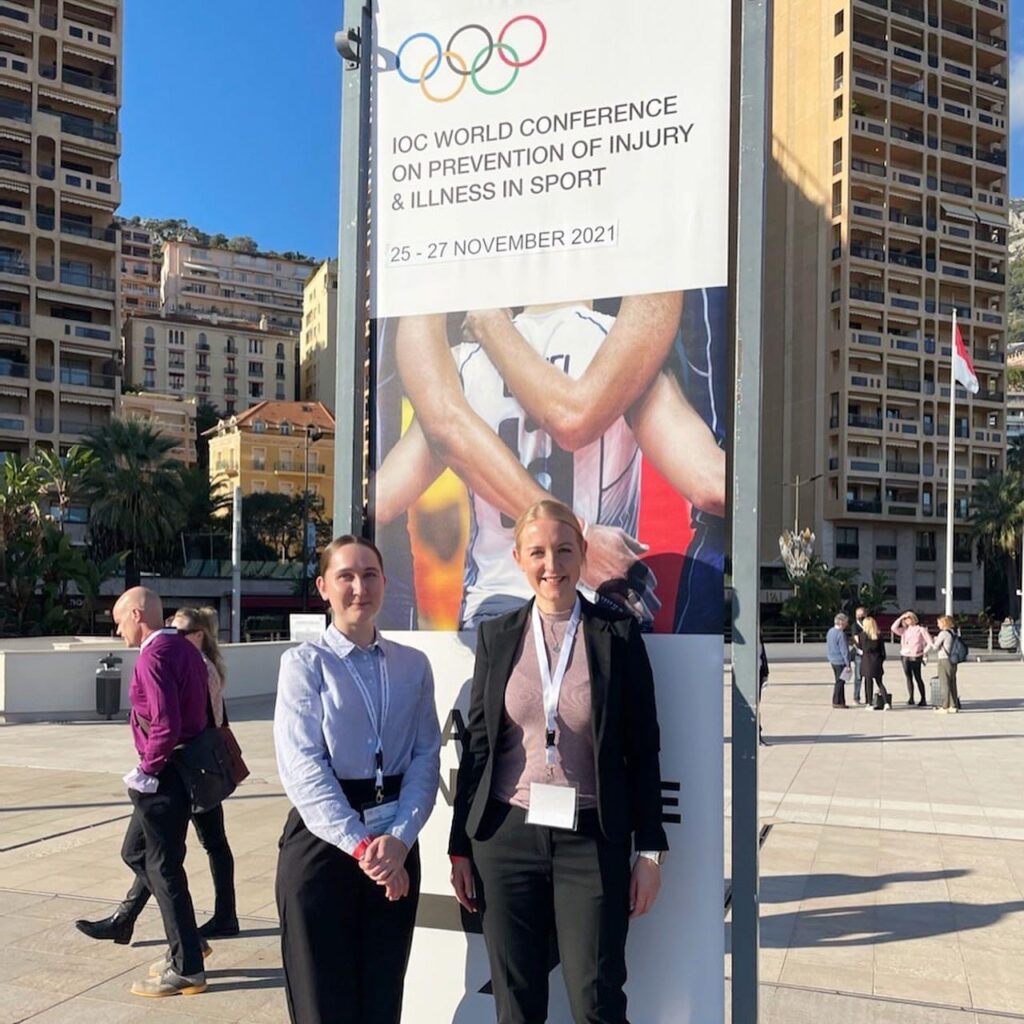BMJ Open Sport & Exercise Medicine Associate Editors, Dr Moa Jederström and Dr Kristina Fagher, were invited to share their perspectives on Sport & Exercise Medicine (SEM) in their home country, Sweden.

Tell us more about yourself
Dr Moa Jederström (@MJederstrom): I am a MD and PhD student at the Athletics Research Centre at Linköping University (Sweden) and a former figure skater, with a particular interest in child and adolescent psychiatry. My research investigates Swedish figure skaters (sports injuries, physical/mental health and safeguarding).
Dr Kristina Fagher (@KristinaFagher): I am a sports physiotherapist specialising in sports medicine. Currently, I lead the physiotherapy team travelling to the Beijing Paralympic Games. I am also a postdoctoral researcher within the Rehabilitation Medicine Research Group at Lund University (Sweden). My research is investigating athlete health, with a focus on parasport, figure skating and athletics.

What is the path to become a sport and exercise physician/physio/scientist in Sweden and what are the main hurdles on this path?
Unfortunately, there is no such thing as a residency in SEM in Sweden. Physicians working in SEM have a background in many disciplines such as orthopaedics, primary care, and internal medicine. Sports and its associated health concerns are an important consideration for athletes, and it is vital to upskill physicians with knowledge pertaining to SEM.
Physiotherapists can complete a Masters in sports medicine or science in Sweden. Then, following additional courses in sports medicine and observation within the field, you can apply to become a specialist in sports medicine, which is a title issued by the Swedish Physiotherapy Association.
Notably, the Swedish Association for SEM (SFAIM) regularly provides courses on sports medicine. After completing three of these courses, you receive a certificate in sports medicine. Both doctors, physios and nurses can attend these courses.
How developed is collaborative work in SEM in Sweden?
SEM in Sweden is generally interdisciplinary, but this may vary between research groups and sporting clubs. The team usually consists of physicians, physios, sports psychologists, sports nutritionists and occasionally nurses. Overall, in Sweden, physiotherapists are the main profession that works with a sporting team, and many have completed further education in techniques such as dry needling, injections, and diagnostic ultrasound.
Are exercise physiologists/scientists integrated into your healthcare system, and does health insurance cover for their services?
Unfortunately, no exercise physiologists/scientists are integrated within the Swedish healthcare system. Physical inactivity is a considerable concern in our country, and there is a dire need to shift towards an Exercise is Medicineapproach. Notably, the book Physical Activity in the Prevention and Treatment of Disease (FYSS in Swedish) was developed in Sweden. The book is a state-of-the-science overview on preventing and treating various diseases and conditions through physical activity. Health care professionals in Sweden would benefit from reading this book to ensure they are providing up-to-date evidence-based practice to their patients.
In Sweden, there is national health insurance and accessible healthcare for all. All licensed healthcare workers in Sweden have the right to prescribe physical activity. From a patient perspective, you can receive these services for a minimal cost (i.e. €0-20) depending on the activity prescribed (e.g., free group exercise training or reduced gym membership when prescribed by a healthcare clinician). The prescription itself is free, and in Sweden there is a national high-cost protection of healthcare (i.e. you never have to pay more than €120 per year for healthcare).
What is done in Sweden to promote SEM among students and young professionals regarding research and clinical opportunities?
At medical schools, SEM as primary and secondary prevention is integrated into the curricula. For physicians interested in learning more, there are courses given by SFAIM. Most physiotherapy programmes in Sweden have a mandatory course in sports medicine. There are also university courses in sports medicine that physicians, physiotherapists, and nurses can attend. However, Sweden could be better at including SEM at the university level, and it would be easier to promote SEM if there was a speciality for physicians. In Sweden, there are also few clinics/hospitals specialised solely in sports medicine, and it is a challenge for young professionals to find a clinical career path in SEM.
In Sweden, we have a strong research tradition in sports medicine, and many students’ opportunities exist to be involved with research during Bachelors, Masters and Doctoral studies. In addition, the yearly Swedish Sports and Exercise Association conference may be an affordable and viable option for students to upskill in SEM.
Finally, if you were Harry Potter, what would you change to SEM in Sweden?
It would be great if more national and EU-supported research grants were available for researchers in SEM, especially given the myriad benefits of exercise training at the healthcare-level. SEM should also be included in the syllabi for all medical university degrees, which would help clinicians increase the awareness of Exercise as Medicine to the broader Swedish population.